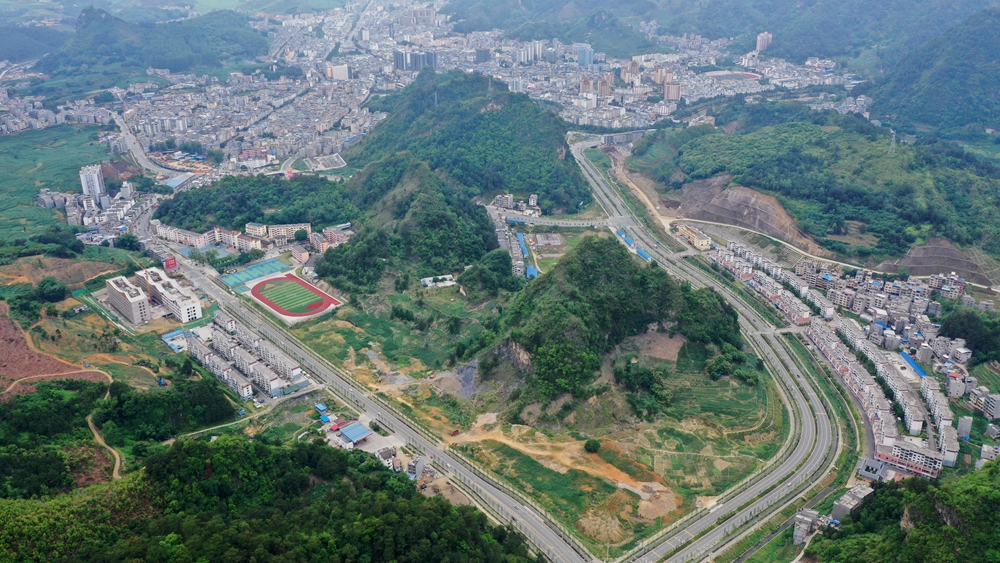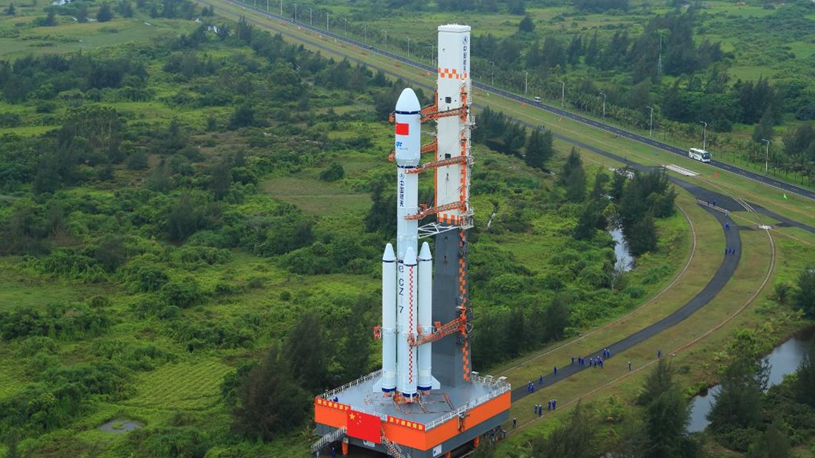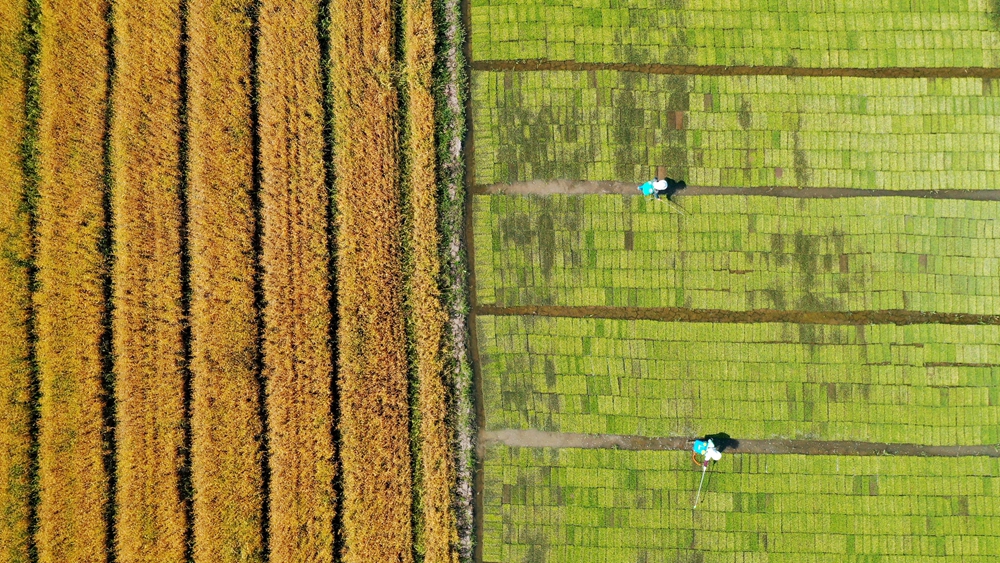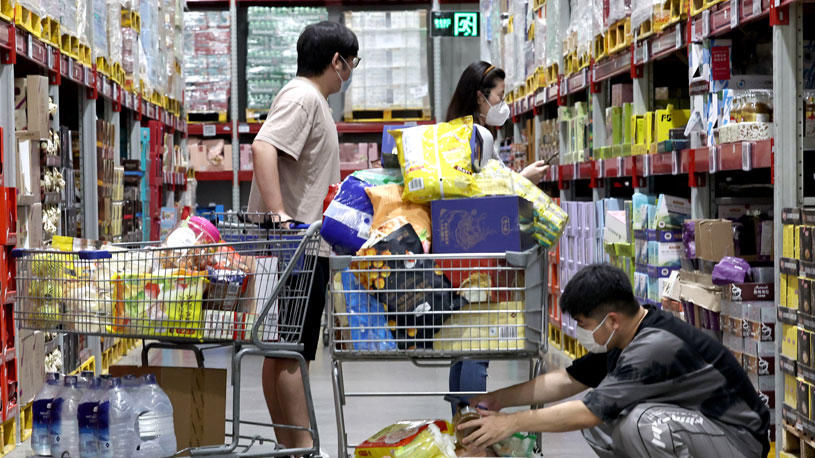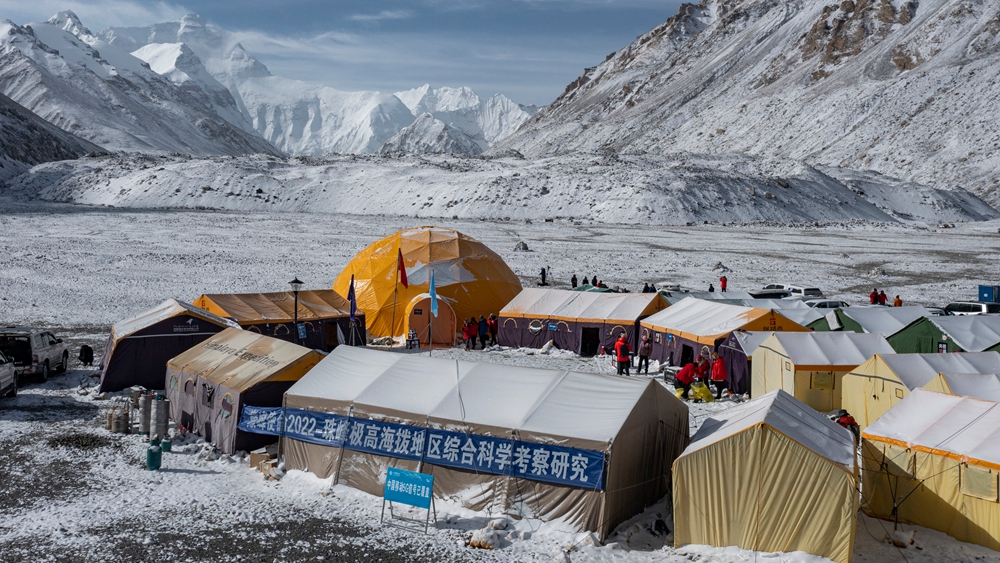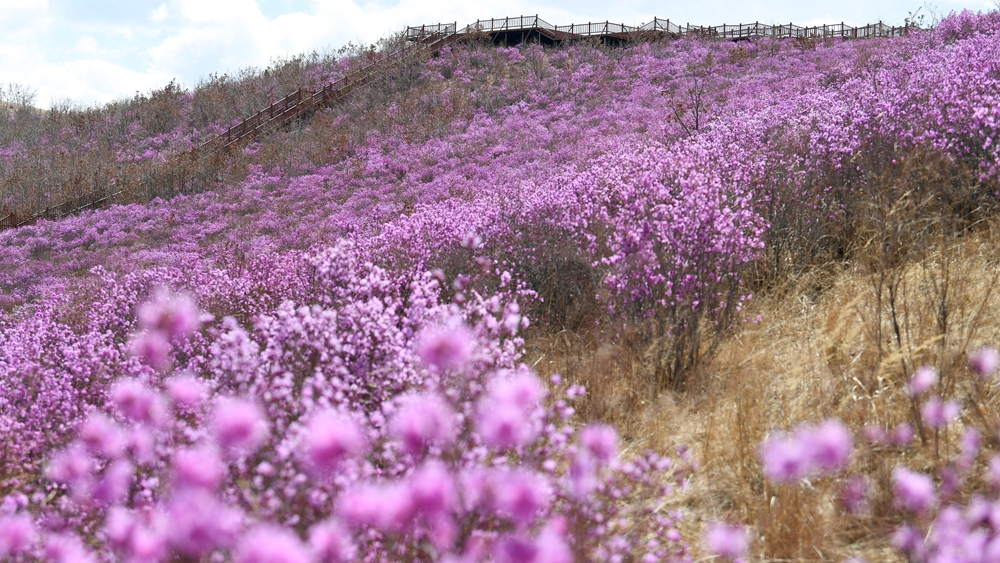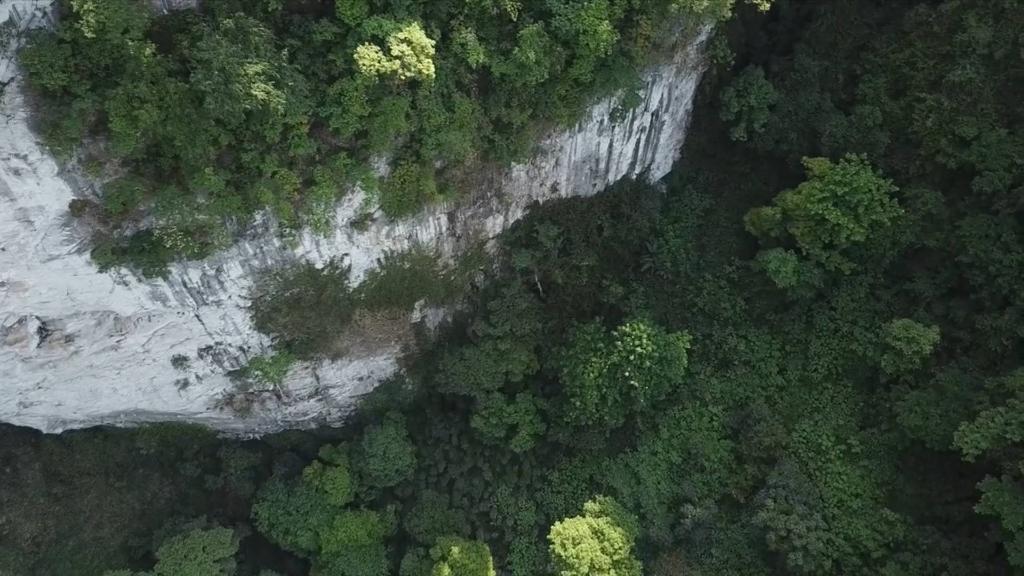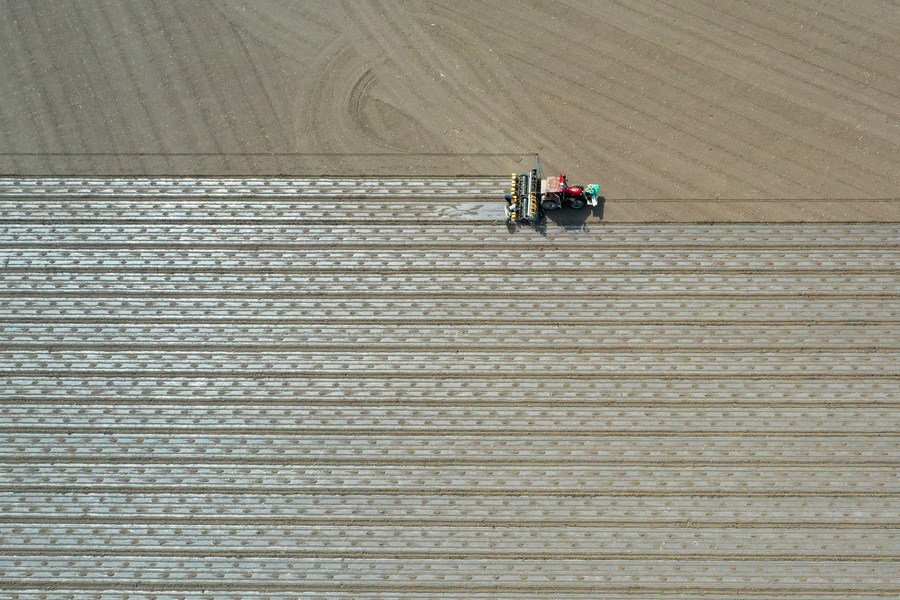
Aerial photo taken on April 19, 2022 shows a seeding machine guided by the BeiDou Navigation Satellite System working in a cotton field in northwest China's Xinjiang Uygur Autonomous Region. (Xinhua/Ding Lei)
URUMQI, May 9 (Xinhua) -- How many people does it take to manage a 500-mu (about 33.3 hectares) cotton field? Mo Xiaoyu, 29, has an answer: just one.
Mo, from central China's Hunan Province, works in an agri-technology enterprise with an average employee age of no more than 30 years old.
Last year the Guangdong-based company launched a pilot project of unmanned management on a 3,000-mu cotton field in Yuli County, some 530 km east of Urumqi, capital of Xinjiang Uygur Autonomous Region.
As a photographer of the cotton field, Mo recorded the process of mechanization that has been realized in farming, planting and harvesting.
"However, management of fields still relied heavily on human labor, especially irrigation," she said.
Generally, every 10 to 15 mu of cotton field needs a water pile, and the switches rely on manual operation.
To address the problem, the company has carried out various experiments with the latest technological equipment and put the results into programming so as to upgrade the existing field management methods.
The efforts of those post-1990s engineers have paid off, as nearly 270 water piles in the test field have been successfully converted into intelligent ones, and advanced automatic fertilization and irrigation machines have been equipped to achieve remote control.
In addition, remote sensing unmanned aerial vehicles (UAV) have been applied to field patrols, which could not be done without farmers in the fields.
"Images taken by remote sensing drones, identified with the help of artificial intelligence, can tell the emergence rate, growth, and pest situation of cotton, which is so cool," Mo said.
Before the trial planting last year, local farmers told Mo that it usually took 20 to 30 people to manage a 3,000-mu cotton field. But now a team consisting of just several young farmers is competent to do the job, thanks to the unmanned management system.
"This year we aim to achieve an unmanned management rate of over 80 percent," said Ling Lei, a team member.
According to 32-year-old Ai Haipeng on the team, their purpose is to explore a mature model of unmanned farm management, which would significantly reduce the difficulty and cost of farming and allow more young people to participate in large-scale agriculture.
To verify the replicability of the management model, Mo volunteered to take charge of a 500-mu field, backed by a whole technical support team. To live up to her new responsibilities, she rented a house from a Uygur couple in the nearest village to the cotton field.
"I want to see what the lifestyle of the new generation of farmers would be like," said Mo. "Agriculture and countryside deserve better imagination and expectation." ■

